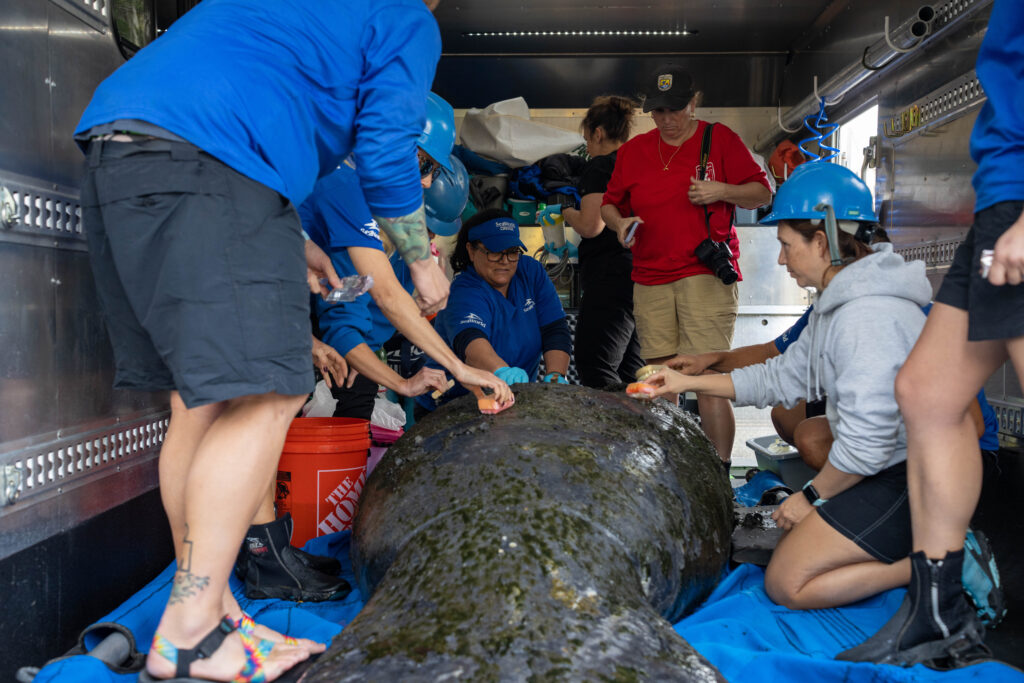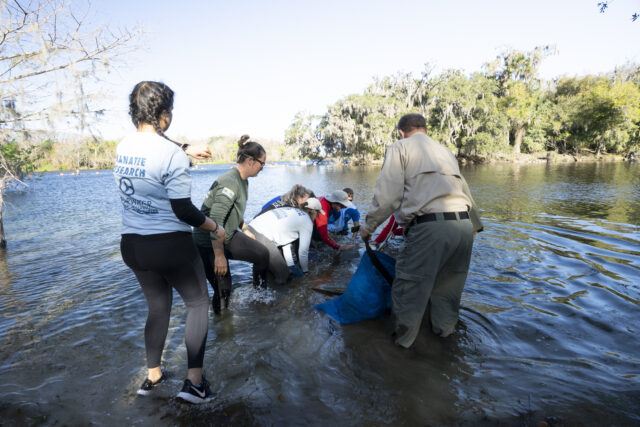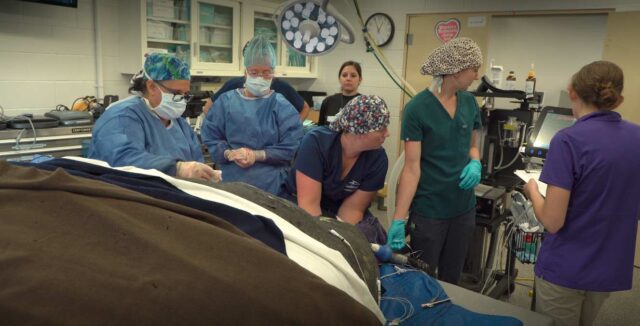Advanced age, preexisting health conditions, and the large size of the manatees made the transport process complex; the animals are now receiving medical evaluations at SeaWorld Orlando and ZooTampa at Lowry Park.
Under the direction of the U.S. Fish and Wildlife Service, members of the Manatee Rescue & Rehabilitation Partnership (MRP) assisted in the transport of three manatees from Miami Seaquarium (MSQ) today. The animals were successfully transported to facilities at SeaWorld Orlando and ZooTampa, two of only three critical care centres for manatees in the United States, where they are now undergoing thorough veterinary examinations.
The manatees were each prepared for transport, loaded into specialised transport vehicles, and accompanied by an experienced team of veterinarians and animal care specialists. Transport trucks for this effort were provided by ZooTampa, Clearwater Marine Aquarium and the Florida Fish and Wildlife Conservation Commission.
The manatees transported from MSQ include Romeo, a male, and Juliet, a female weighing over 3,000 pounds. Both animals are over 65 years in age and have resided at MSQ since the late 1950’s. The pair arrived at MSQ prior to the enactment of the Endangered Species Act and the Marine Mammal Protection Act. After the call of MSQ to provide a better social group for both Romeo and Juliet, ZooTampa contacted the U.S. Fish and Wildlife Service and offered to temporarily care for these two manatees, while the MRP identifies a permanent location for them.
Clarity is an adult female manatee that has resided at MSQ since 2009 when she was rescued due to watercraft-related injuries. Through the Endangered Species Act and the Marine Mammal Protection Act, the U.S. Fish and Wildlife Service has jurisdiction over Clarity, and the USFWS requested SeaWorld Orlando assume care for her. She will reside at SeaWorld Orlando until a group of MRP experts reviews her case and determines best placement for her at another facility.
Florida manatees are at risk from natural and human-caused threats, including exposure to the loss of sea grass, red tide, cold stress, disease, boat strikes, crushing by flood gates or locks and entanglement or ingesting of fishing gear.
Members of the MRP that helped with this complicated transport effort include U.S. Fish and Wildlife Service, Florida Fish and Wildlife Conservation Commission, SeaWorld Orlando, ZooTampa, Clearwater Marine Aquarium, Bishop Museum of Science and Nature, University of Florida, Mote Marine Lab, Homosassa Springs Wildlife State Park, and Save the Manatee Club.
The MRP is a cooperative group of non-profit, private, state, and federal entities who work together to advance manatee conservation by partnering in manatee rescue, rehabilitation, release and monitoring, research, and education efforts.
Back to news


